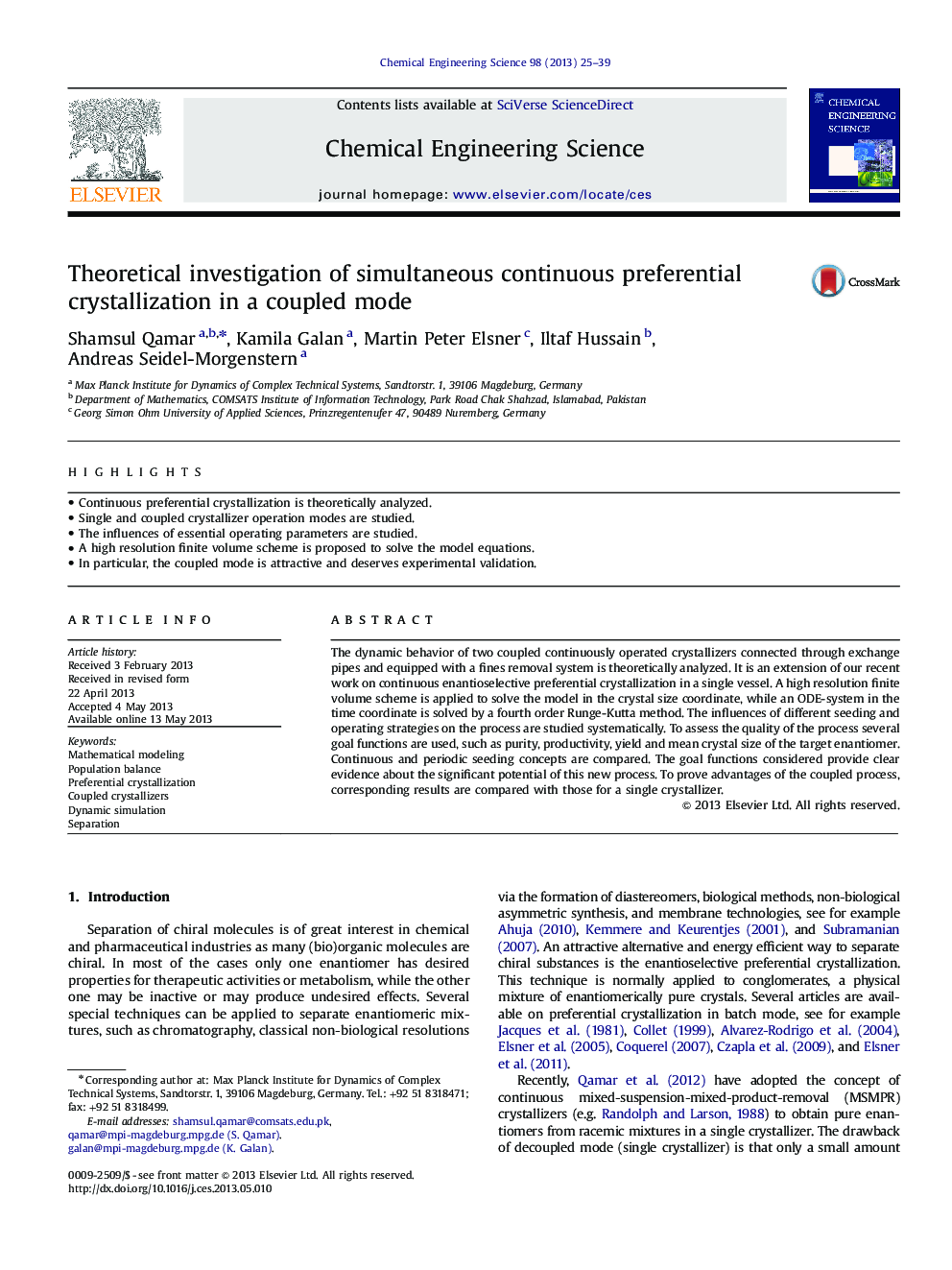| Article ID | Journal | Published Year | Pages | File Type |
|---|---|---|---|---|
| 155104 | Chemical Engineering Science | 2013 | 15 Pages |
•Continuous preferential crystallization is theoretically analyzed.•Single and coupled crystallizer operation modes are studied.•The influences of essential operating parameters are studied.•A high resolution finite volume scheme is proposed to solve the model equations.•In particular, the coupled mode is attractive and deserves experimental validation.
The dynamic behavior of two coupled continuously operated crystallizers connected through exchange pipes and equipped with a fines removal system is theoretically analyzed. It is an extension of our recent work on continuous enantioselective preferential crystallization in a single vessel. A high resolution finite volume scheme is applied to solve the model in the crystal size coordinate, while an ODE-system in the time coordinate is solved by a fourth order Runge-Kutta method. The influences of different seeding and operating strategies on the process are studied systematically. To assess the quality of the process several goal functions are used, such as purity, productivity, yield and mean crystal size of the target enantiomer. Continuous and periodic seeding concepts are compared. The goal functions considered provide clear evidence about the significant potential of this new process. To prove advantages of the coupled process, corresponding results are compared with those for a single crystallizer.
